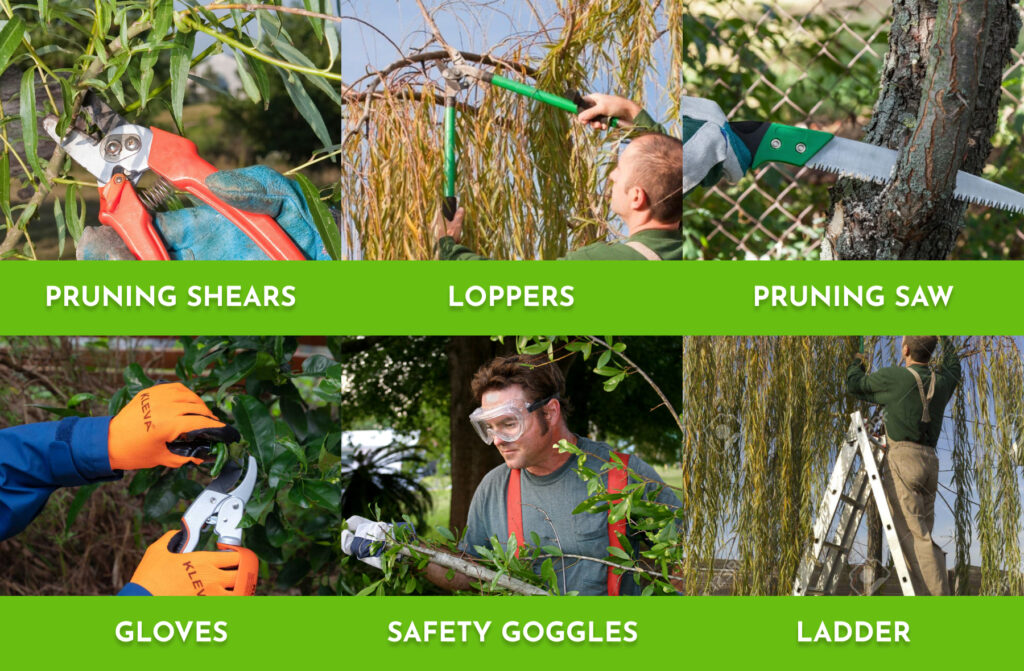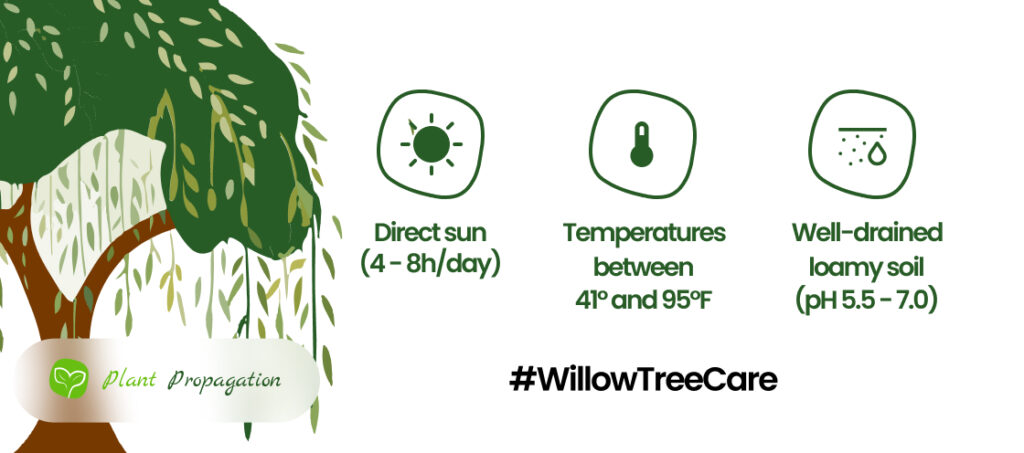
Welcome to the ultimate guide to pruning your willow tree for robust health and vitality. Discover the secrets behind timing your pruning efforts effectively, ensuring your tree thrives through all seasons.
Explore:
- Perfect Timing: Learn the best times to trim your willow tree for optimal results, making winter your prime pruning season.
- Essential Tools: Discover the key tools needed and crucial sanitation practices to protect your tree from diseases.
- Step-by-Step Pruning: From nurturing a young tree’s growth to maintaining a mature one’s vitality, find detailed steps for every stage.
We’ll also discuss some post-pruning care tips to guarantee your tree’s recovery and flourishing health. Let’s learn How to Prune a Willow Tree the right way!
Best Time To Prune a Willow Tree
Timing is key. Pruning your willow tree is a smart move, especially in winter. When it’s early to late winter, these trees aren’t sprouting new growth, and there are no leaves on the branches. That’s a good thing! Without any new growth or leaves, it’s super clear where to snip. You can trim those willow branches without any trouble. So, when it’s chilly outside, that’s the best time to grab your pruning tools.
The Tools You’ll Need
The number one rool when it comes to the tools you need for pruning your Willow is you want to sanitize everything that you are going to make cuts with. Willows are susceptible to diseases such as Willow blight or Willow scab.
Here is everything you are going to need:
- Pruning shears for smaller branches
- Loppers for thicker branches
- A handsaw or pruning saw for larger limbs
- Gloves and Safety Glasses for protection
- Ladder to reach higher branches

How to Prune a Willow Tree Step-by-Step
What to Prune
To keep your willow tree healthy, first, spot any hurt or damaged branches and swiftly prune them away. These branches might look weak or about to fall off—snip them off to boost your tree’s strength. Other than this:
- Check for root suckers—small, thin branches at the tree’s base—and trim them at their base. They steal nutrients, so it’s best to say goodbye!
- Find and trim stems sticking out from the main one, especially if your tree’s sprawling. Identify the main sturdy stem in the middle and use a pruning saw to trim extra growth, even the bigger ones. Take breaks—it’s a hefty task!
- For low-hanging branches, cut back about a third using shears or pole pruners. Keep your tree tidy without chopping off whole branches.
- Untangle intertwined branches, starting with smaller ones, then larger ones. Space out top branches about 2 inches apart for better air circulation.
- Keep an eye out for extra growths and rub them off promptly—they sneak up on the tree’s sides.
Pruning a Young Willow Tree
For young willow trees, focus on shaping. Your goal? A sturdy central leader that’ll grow into the main trunk. Trim close-together or weak branches prone to breaking later.
Here’s how:
- Cut off any damaged branches where they meet the trunk.
- Pick a tall, straight stem as the central leader and remove competing stems.
- Say bye to branches growing upwards—they might break as the tree grows.
- Clear crowded branches, spacing them evenly around the tree.
- Once the trunk hits 2 inches in diameter, remove lower branches.
This shaping routine helps your young willow grow strong, ensuring a balanced, healthy structure as it matures.
Pruning a Mature Willow Tree
For mature willow trees, less pruning is more. Focus on swift removal of broken or rubbing branches, aiding faster healing and fewer diseases. When shortening branches, always cut just beyond a leaf bud or twig.
Here’s what to do:
- Keep the lower part branch-free.
- Stop new growth by pinching or rubbing it off.
- Space out branches to improve air circulation, reducing breakage risk.
- Cut ground-level suckers to save the tree’s energy.
Remember, these quick maintenance steps for mature willows ensure better heal
Aftercare
Post-pruning care is vital for the tree’s recovery:
- Clear debris to prevent disease and pests.
- Apply pruning sealant to larger cuts to aid healing.
- Water the tree adequately to support new growth.
- Consider fertilizing to boost recovery.
Remember, observe the tree’s response post-pruning. Healthy new growth indicates success!

Frequently Asked Questions
When should you trim willow?
For willow trees, it’s smart to trim them during winter. Why? Well, in winter, the trees aren’t growing meaning from early to late winter, there’s no new growth, making it simpler to see what needs pruning. This way, you can trim those willow branches without any fuss!
How do you prune a twisted willow tree?
Pruning a Twisted Willow Tree is best done when it’s asleep during late winter or early spring. First, get rid of any dead or sick branches. Use sharp shears to snip just outside the spot where the branch meets the trunk. Don’t cut too close or leave stubs; that can make it sick. Also, don’t chop off more than one-third of the tree’s top in one go. Taking it slow keeps the tree healthy while shaping it up nicely!
Should willow trees be pruned?
Pruning when a willow is young helps set its growth pattern straight. It’s like giving it a blueprint for growing up without needing big changes later. Trimming early means it’s easier to shape as it gets bigger, keeping it looking good without major makeovers.
Can I prune a willow tree in the summer?
You’re better off trimming willows in winter or early spring, not summer. When the leaves drop or before the sap starts moving (before March) is prime time. But hey, if it’s urgent, you can snip a few tiny branches in summer once the leaves are big. Just keep it light—save the big trim for the right seasons!

